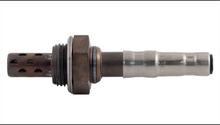Mercedes-Benz E-Class and E-Class AMG: Why Does My Car Idle Rough?
Does your engine idle rough? Read our diagnosis to learn if your MAF or oxygen sensor is the culprit.
This article applies to the Mercedes-Benz E-Class and E-Class AMG (2002-2009).
The Mercedes-Benz E-Class is a luxurious sedan with a very smooth engine. If the engine idles rough, this means you have a problem. To run smooth, the engine needs air and fuel in optimal proportions. In a modern car, the proportion between air and fuel is decided by an on-board computer that gets information from a wide range of sensors. These are measuring for example, the oxygen level in the exhausts exiting the engine, the position of the crankshaft, the temperature, the position of the throttle, and the flow of air into the engine. The engine also needs to be suspended with fully functioning mounts to minimize the amount of vibrations that the engine emits.

Materials Needed
- Flat head screw driver
- OBDII reader (computer software and cable)
- Second person (optional)
Step 1 – Mass Air Flow (MAF) sensor
The MAF sensor checks how much air flows into the engine. This information is then used by the on-board computer to calculate how much fuel is needed. Sometimes the MAF sensor gets contaminated or breaks, which gives the computer an incorrect measure of the amount of air flowing into the engine.
If you are experiencing that your engine makes a small hesitation after you have stopped, odds are your MAF is malfunctioning. Normally, when the MAF is malfunctioning the "Check engine" light should also light on the instrument panel. This means that you could read fault codes using an OBDII reader.
You could try and remove the MAF sensor and clean it with some special MAF cleaning spray and see if the fault code goes away. If you are unsure whether the fault code is related to the MAF or not, you could clean it just in case, it is very cheap to clean the MAF and it's a great, important piece of maintenance to do.

Figure 1. MAF sensor (Mass Airflow Sensor) 
Figure 2. Clean the MAF with MAF cleaner spray.
Step 2 – Engine and transmission mounts
If your car is vibrating when idling at a stop, it could be due to bad engine and transmission mounts. Usually the vibration would go away when you put the car in neutral, and if the mounts are bad, you shouldn't feel any hesitation when accelerating.
To make sure it is bad mounts that are causing the vibration, you can do the following: Have a second person press the brake and then put the car in drive. Pop the hood and put your hand on the engine or the airbox with a mitten. If your engine is shaking, the mounts most likely need to be replaced. If you don't have a second person to help you, you could pull the parking brake and put the car in drive, and then put your hand on the engine.
Another way to check the motor mounts is to raise the front end of your car, slide under the engine with the car off, and visually check the motor mounts located on top of the frame supporting the front corners of the engine. You should be able to tell whether they are broken or not.

Step 3 – Oxygen sensors
There are two oxygen sensors in your E-Class. The first sensor measures the oxygen level in the exhausts exiting the engine, and the second sensor measures the oxygen level right after the catalytic converter. The oxygen sensors feed the onboard computer with information that is used to optimize the air/fuel ratio with the fuel injection system.
Symptoms of bad oxygen sensors include accelerating and backfiring, poor engine performance, high fuel consumption and high or low carbon oxide level at idle. It is also common that the "check engine" lamp is lit on the instrument panel when the oxygen sensors are bad. When the oxygen sensors are bad, they must be replaced.

Related Discussions
- Common Parts Cause Rough Idle - MBWorld.org
- Really Rough Idle - MBWorld.org
- Rough Idle - MBWorld.org
- Rough Idle - MBWorld.org
- Vibration Rough Idle - MBWorld.org
- Oxygen Sensor Replacement - Pelicanparts.com
- OBDII Connector - MBWorld.org
- MAF Removal - MBWorld.org
- Oxygen Sensor - MBWorld.org
- Consistent Vibrations - MBWorld.org






